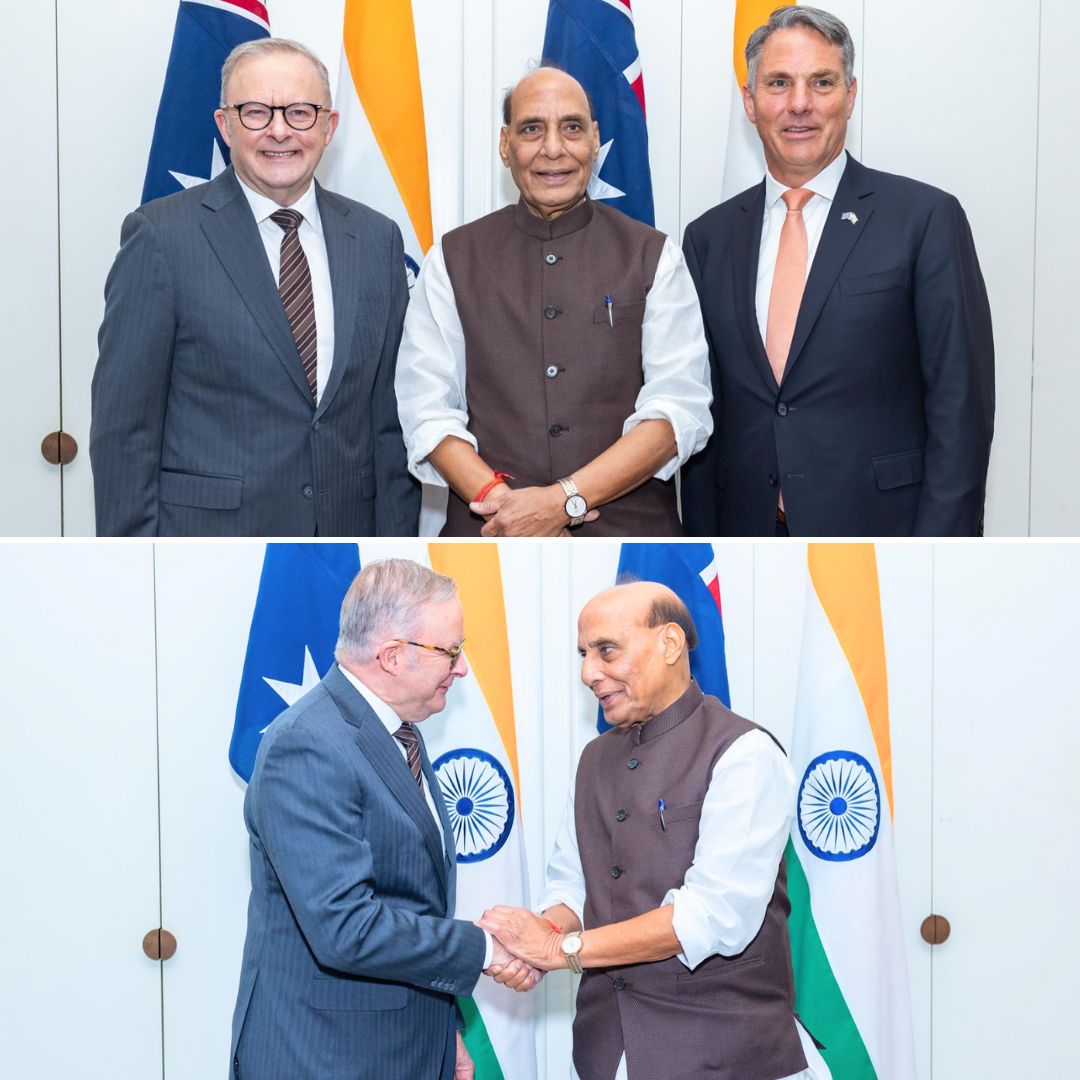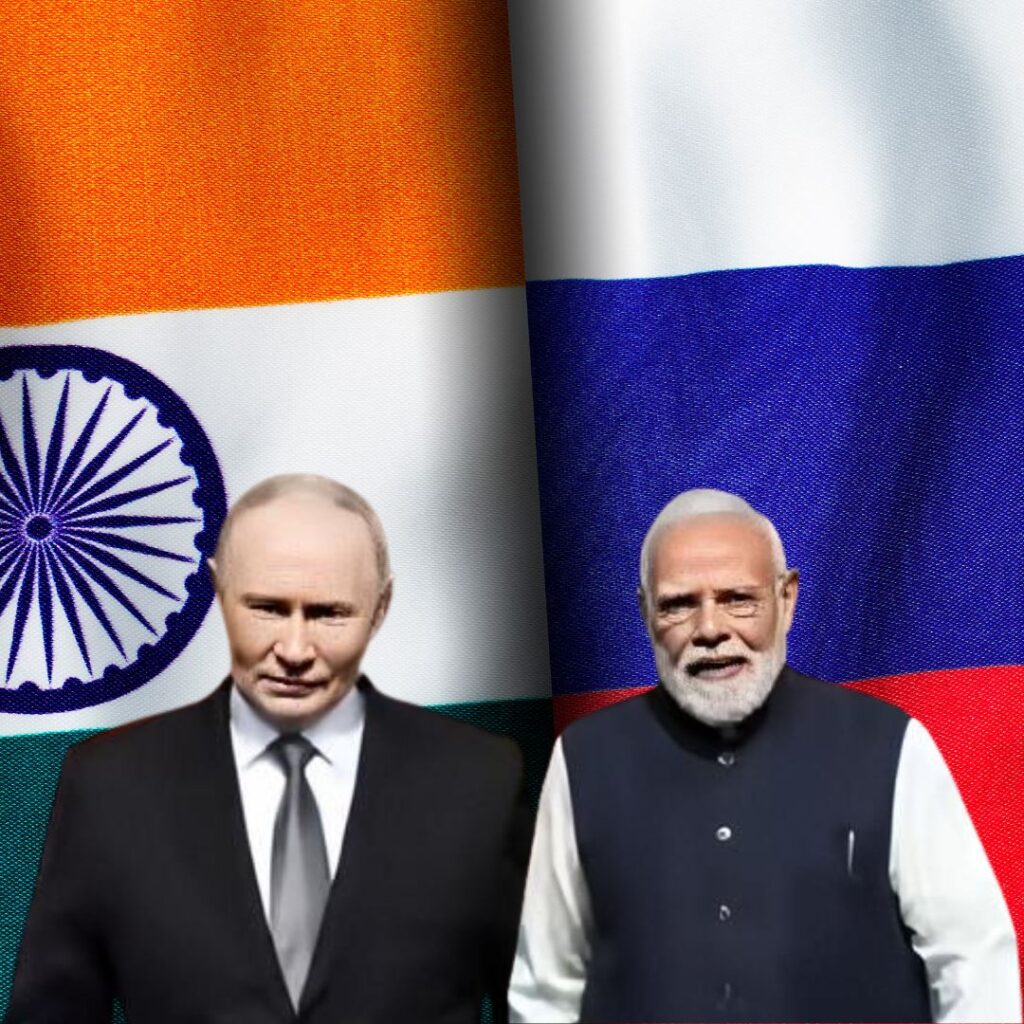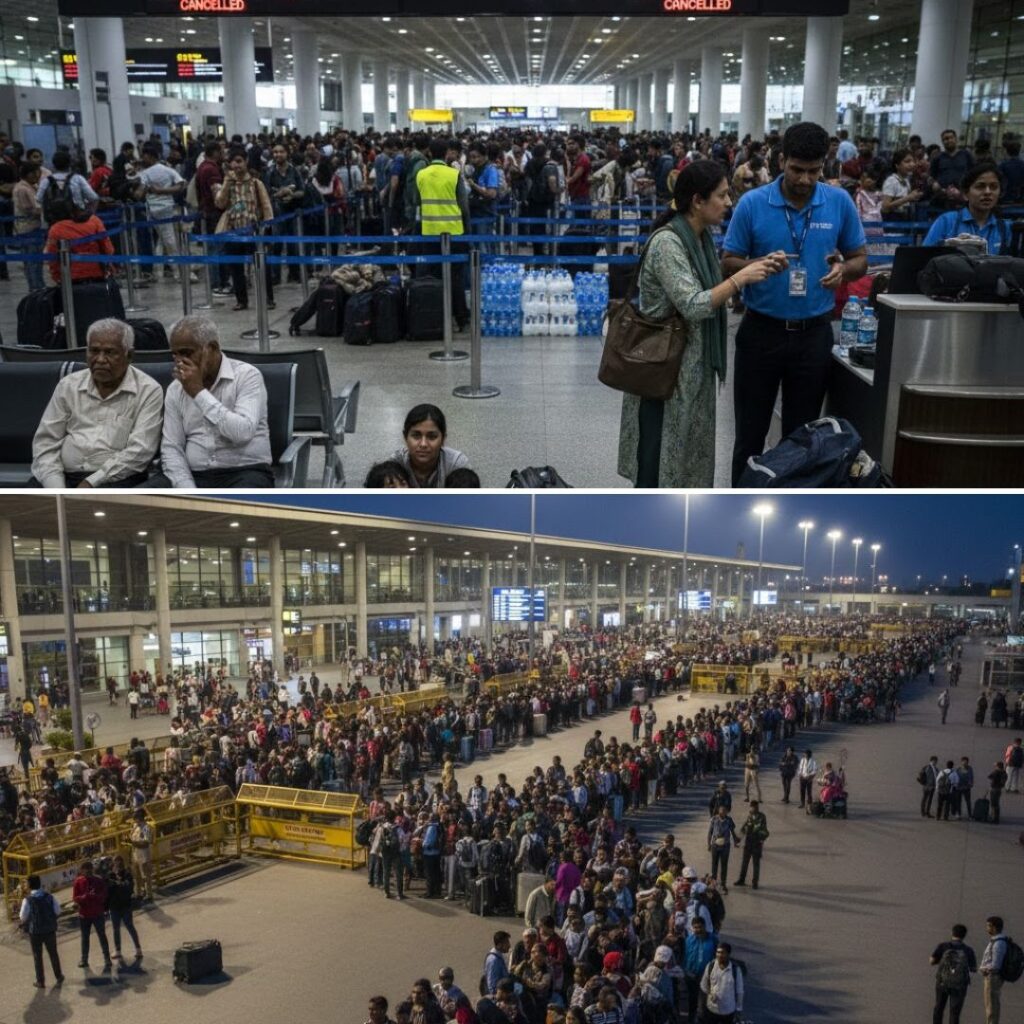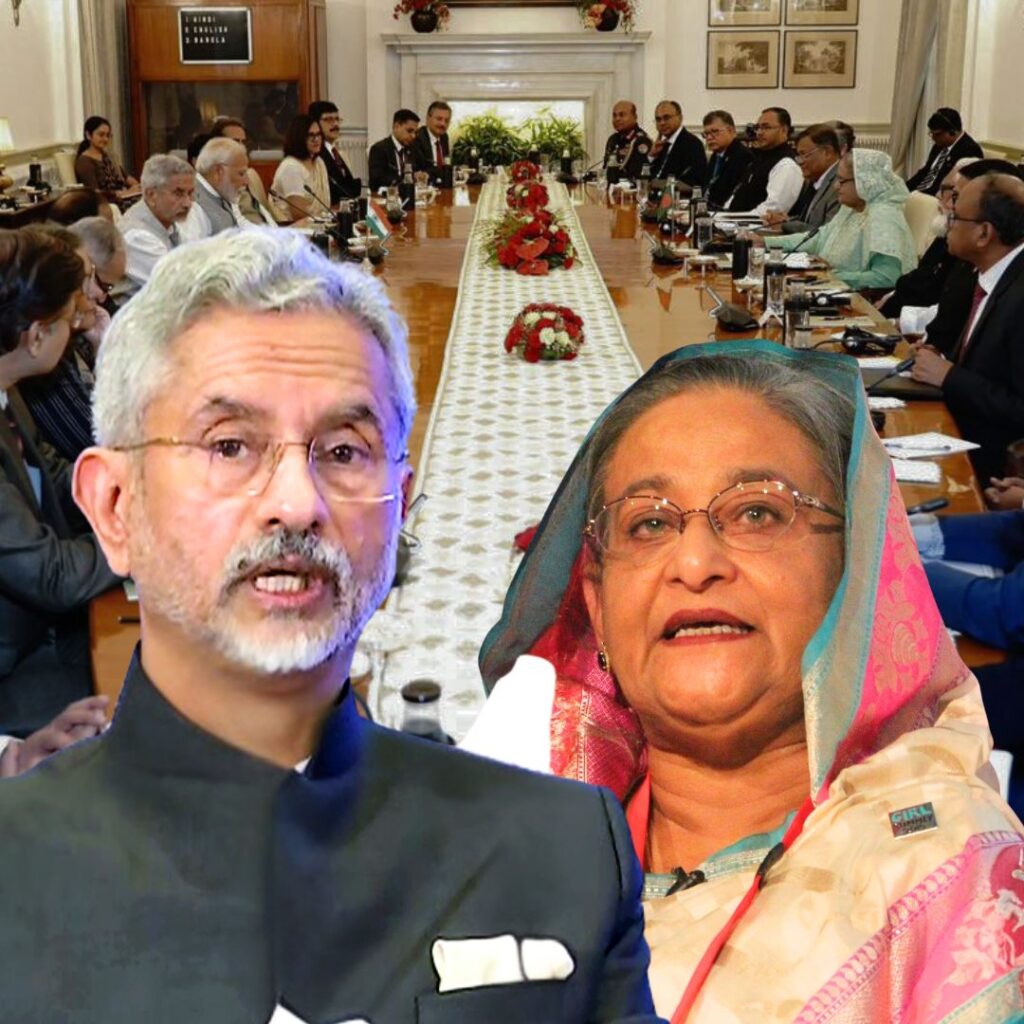India and Australia have signed key defence agreements during Defence Minister Rajnath Singh’s two-day official visit to Canberra, marking the first such visit by an Indian Defence Minister since 2014 and coinciding with the fifth anniversary of the India-Australia Comprehensive Strategic Partnership (CSP).
The new pacts, described by Australia’s Deputy Prime Minister and Defence Minister Richard Marles as a “hugely significant step,” aim to deepen operational engagement, boost interoperability, and enhance information sharing and maritime security cooperation between the two nations’ armed forces.
The agreements include the establishment of a forum for joint staff talks between operational commands and a submarine rescue cooperation framework, reflecting a strategic alignment rooted in shared democratic values and a commitment to a free, open, and rules-based Indo-Pacific. Prime Minister Anthony Albanese joined the discussions, underscoring the growing importance of the bilateral relationship.
Excellent meeting with the Prime Minister of Australia Hon Anthony Albanese in Canberra. He fondly recalled his deep association with India. I am confident that India-Australia bilateral relationship will continue to grow deeper and stronger. @AlboMP pic.twitter.com/nVt7ZLYLCb
— Rajnath Singh (@rajnathsingh) October 9, 2025
Inside the India-Australia Defence Pact: Key Details
The India-Australia defence pact strengthens Indo-Pacific security through joint staff talks, submarine rescue cooperation, and enhanced maritime domain awareness, reflecting deepening strategic alignment between the two democracies . Here are 10 important takeaways.
1. The pact includes the establishment of an Annual Defence Ministers’ Dialogue, institutionalising high-level strategic talks and marking the first such visit by an Indian Defence Minister in 12 years.
2. A key component is the Operational Command Staff Talks Agreement, enabling direct coordination between the Indian and Australian military commands for joint planning and real-time operational engagement.
3. Both nations signed a Memorandum of Understanding (MoU) on Submarine Rescue Cooperation, allowing their navies to deploy rescue systems and personnel during submarine emergencies, enhancing safety and interoperability.
4. The agreement strengthens the Mutual Logistics Support Arrangement (MLSA), facilitating humanitarian assistance during disasters and enabling joint military exercises through shared logistics and refuelling.
5. India and Australia will enhance Maritime Domain Awareness (MDA) by sharing satellite and radar data to monitor vessel movements across the Indian Ocean, improving early warning and anti-piracy efforts.
6. The pact supports joint maritime patrols and anti-submarine warfare drills, particularly in the Indo-Pacific, to counter growing strategic competition and ensure freedom of navigation.
7. Australia welcomed India’s first-ever participation in Exercise Talisman Sabre 2025, a major multinational drill involving 35,000 troops, reflecting deepening operational trust.
8. Both countries are advancing defence industry collaboration, with Australia’s first defence trade mission to India underway to explore joint manufacturing, technology transfer, and integrated supply chains.
9. India’s growing status as a credible defence exporter was highlighted, with discussions on co-producing drones, surveillance systems, and naval equipment under the “Make in India” initiative.
10. The pact reinforces a shared vision for a free, open, and rules-based Indo-Pacific, with both democracies committed to upholding territorial integrity, countering terrorism, and ensuring no single nation dominates the region.
A Growing Partnership in the Indo-Pacific
The India-Australia defence relationship has evolved rapidly since being elevated from a Strategic Partnership in 2009 to a Comprehensive Strategic Partnership in 2020, now encompassing joint exercises like Talisman Sabre, military training programmes, ship exchanges, and coordinated maritime operations.
The Mutual Logistics Support Arrangement facilitates humanitarian assistance during disasters and supports complex military exercises, enhancing collective deterrence. This visit also follows Marles’ trip to New Delhi in June 2025, where both leaders condemned the Pahalgam terror attack and pledged joint efforts against cross-border terrorism.
With increasing strategic competition in the Indo-Pacific, both nations are committed to upholding territorial integrity, protecting trade routes, and ensuring no single country dominates the region. The deepening ties reflect a shared vision of regional stability, with both democracies positioning themselves as key pillars of a balanced security architecture.
The Logical Indian’s Perspective
As India and Australia strengthen their defence partnership, it is vital to remember that true security lies not just in military alliances, but in building trust, transparency, and mutual respect among nations.
While joint exercises and submarine rescue pacts are important, the real strength of this relationship stems from shared democratic values, people-to-people connections, and a collective commitment to peace.
In a world increasingly defined by power blocs, India must continue to champion multipolarity, not through confrontation, but through dialogue, cooperation, and ethical leadership.











